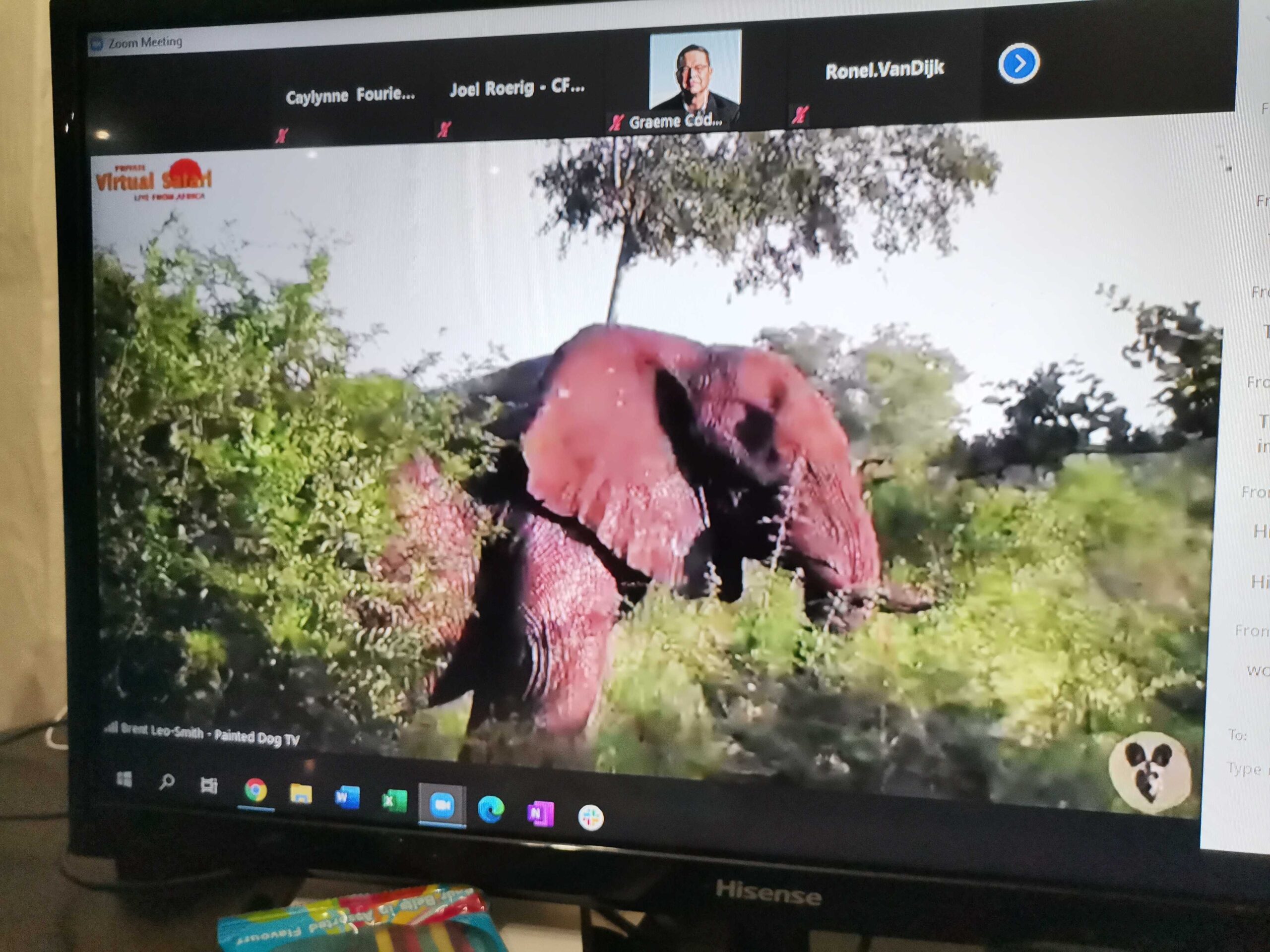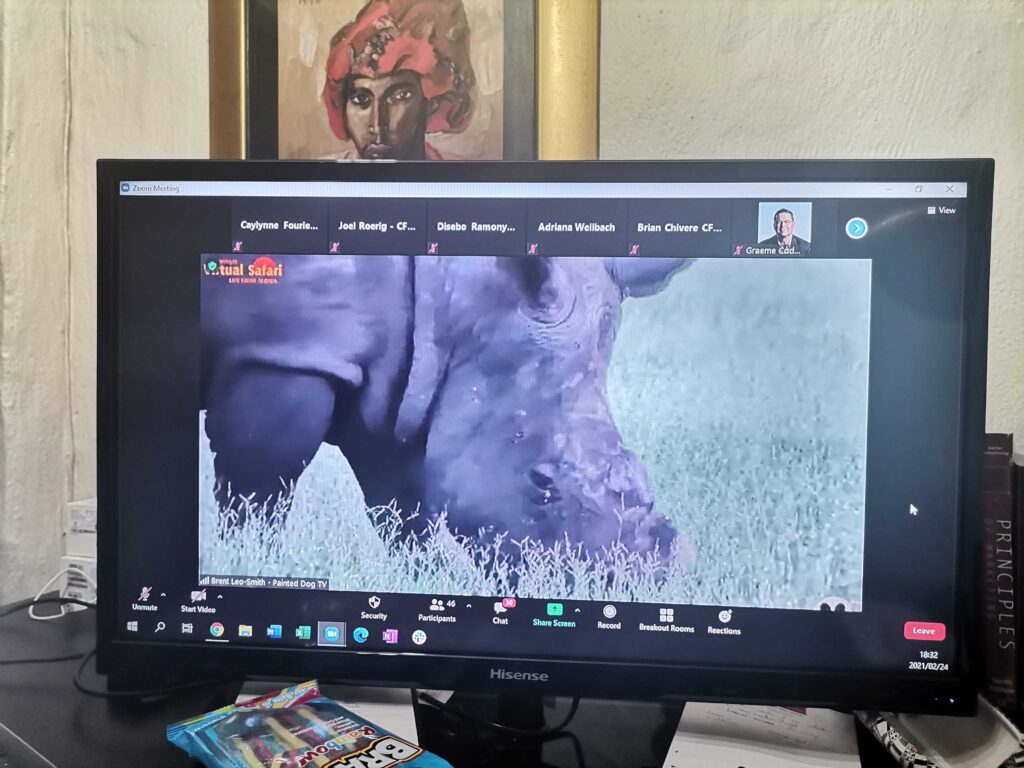Summit attendees went on a first-ever SA executive virtual safari through the Kruger National Park.
On 24 February, an exclusive group of South Africa’s leading finance and HR professionals gathered online for the Fearless Future Summit, hosted by CFO South Africa, during which they explored some of science writer Arthur C Clarke’s predictions in the 70’s.
One of these predictions was virtual safaris. “What could be done, even with current techniques, is to provide 3D or widescreen cinorama type pictures for a single person at a time. It could also give rise to a new industry; personalised television safaris. When you can have a high-quality cinema display in your home, it will certainly be a global audience for specialised programmes with instant feedback from viewer to cameraman. How nice to be able to make a trip to the Amazon with a few dozen unknown friends scattered all over the world, with perfect sound and vision, being able to ask your guide questions, suggest detours, request closeups of interesting plants and animals. In fact, sharing everything except the mosquitos and the heat,” he wrote.
After discussing what they predicted for the future and a look at what might already be possible by futurist Graeme Codrington, the attendees were then taken on a live, private virtual safari through the Greater Kruger National Park, guided by bushveld expert Brent Leo-Smith from Painted Dog TV.
Read more: Summit reveals that the future isn’t as ridiculous as you may believe
The attendees’ first sighting was an elephant without a tail taking a mud bath. Brent explained that he and his crew had been tracking the elephant as she was going from one muddy pit to another. He then followed her as she went looking for yet another mud puddle and a tree on which to scratch her behind.

CFO South Africa then asked attendees which animals they wanted to see and, after much debate, Brent went looking for the requested leopard and hyena. He explained that, earlier that day, he had been tracking a mother leopard with her two cubs. Following her earlier route, he came across some Matabele ants marching across the road, and found fresh leopard spoor, but the leopards themselves remained well hidden in the verdant foliage of the park.
One of the attendees asked Brent what his favorite part of the Kruger National Park was, and he said that he couldn’t pick one exact spot. He explained that he loves the lowveld and, despite having been to many different areas in Africa, he always finds himself coming back returning to the lowveld.
Brent decided to track some hyenas instead. On his way to where he usually sees the hyenas are, he came across some eagles nesting in a tree, as well as blue wildebeest with three little calves. He explained that the eagles nested in that same tree every year and pointed to older nests that were hanging on to the lower branches of the tree. He also said that the wildebeest of the area had lost a lot of calves to the lions, hyenas and other natural predators this season.
After giving guests some time to admire one of the big five, he drove on. As luck would have it, he came across the hyenas that everyone had been looking forward to.
Another guest asked Brent what one of the funniest questions was that he had received as a tour guide. He said that he was once asked whether zebras eat meat, but that that wasn’t the most amusing interaction he had had with a tourist. “We had a large area stacked with wood that we used to make fires and one of the ladies on the tour asked what it was. I jokingly said that it was an elephant nest, and she believed me! She only realised it was a joke the next day.”
As Brent drove on and neared the end of the hour-long game drive, the guests saw a rhino, grazing in the field. The rhino had been dehorned by the Kruger National Park rangers to make sure that it wouldn’t get poached. One of the guests asked how long its horn would have been if it hadn’t been cut. Brent said that it differed for each rhino and that it was difficult to guess. He explained that the rhinos’ horns were cut down every two years to make sure they don’t grow long enough to be a poaching risk.
Finally, guests were given a view of the red-gold sun as it set behind the lowveld trees of the Kruger National Park, bringing the first-ever SA executive virtual safari and Summit to an end.











